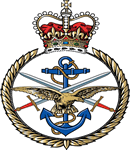Commemorated: | |||
| 1. Memorial: | Amara War Cemetery | I. C. 5. | |
| 2. Book: | The (1921) Masonic Roll of Honour 1914-1918 | Pg.122 | |
| 3. Memorial: | The (1940) Scroll - WW1 Roll of Honour | 31B GQS | |
Awards & Titles: | |||
Family :
Farie was the youngest and only surviving son of the late Robert Farie MD, of Dunmore, Victoria and the late Mrs Farie, formerly of Ruthven, The Boltons, and the grandson of the late James Farie of Farme, Lancashire.Service Life:
Campaigns:
- The First World War 1914-1918, World-wide.
| Unit / Ship / Est.: 1/Highland Light Infantry |
1st Battalion August 1914 : in Ambala, India. Part of the Sirhind Brigade in the 3rd (Lahore) Division. Moved to France via Egypt, landing at Marseilles 1 December 1914 (some weeks after the other Brigades of the Division). December 1915 : moved to Mesopotamia. January 1917 : left the Division and moved to the Tigris Defences. September 1917 : attached to 51st Brigade in 17th Indian Division in Mesopotamia, where it then remained |
| Action : Mesopotamia |
At the outbreak of war the British, together with Indian troops, resolved to protect oil supply in the region by occupying the area around Basra at Abadan. This evolved into a series of campaigns towards Baghdad against the Turkish forces as Mesopotamia (modern Iraq) was part of the Ottoman Empire. Meetings in late 1914 and into 1915 led the Viceroy and Indian government at Simla to reconsider the limited involvement of troops and they decided to order further advances with a view to securing the Shatt-al-Hai, a canal connecting the Tigris and Euphrates river and potentially capturing Baghdad. The British government disagreed and wished to conserve forces for the Western front. The Viceroy was given permission to act as it wished, but told in no uncertain terms that no reinforcements should be expected.
The initial success experienced by the British and Indian forces quickly disintegrated in the face of Ottoman opposition. The Siege of Kut-Al-Amara began on 7th December with the besieging of an 8,000 strong British-Indian garrison in the town of Kut, 100 miles south of Baghdad, by the Ottoman Army. These campaigns produced few tactical benefits, indeed the catastrophic defeat at Kut in 1916 was a major setback. Badhdad was eventually taken in March 1917.
The conditions in Mesopotamia were dreadful. The climate, sickness and disease produced large losses in addition to battle casualties. About as many men died of disease as were killed in action. The Mesopotamia front was part of a strategy hoping for success at lower cost than the Western Front but no decisive victory was achieved.
Commissioned into the Highland Light Infantry (London Gazette 3 May 1907).
Promoted to Lieutenant Apr 1910 and to Captain in Mar 1915.
Awarded an Aviator's Certificate by the Royal Aero Club 30 Jun 1914, he was gazetted a Flying Officer in the RFC Reserve.
Detail :
Wounded in the attack on Dujalia Redoubt, Mesopotamia on 8 Mar 1916. Died of his wounds aged 29 years. Buried in grave I. C. 5. of the Amara War Cemetery, Al Amarah, Maysan, Iraq.
Masonic :
| Type | Lodge Name and No. | Province/District : |
|---|---|---|
| Mother : | Wellesley No. 1899 E.C. | Berkshire |
Initiated | Passed | Raised |
6th April 1914 | 30th November -0001 | 30th November -0001 |
Discrepancies (Require checks, clarity or further research) :
Full Name: Claude Allan Gilbert Lindsay Hamilton Farie
Middle names Lindsay and Hamilton excluded in some records.
Source :
The project globally acknowledges the following as sources of information for research across the whole database:
- The Commonwealth War Graves Commission
- The (UK) National Archives
- Ancestry.co.uk - Genealogy, Family Trees & Family History online
- ugle.org.uk - The records of the United Grand Lodge of England including the Library and Museum of Freemasonry
Additional Source:
- Founder Researchers : Paul Masters & Mike McCarthy
- Researcher : Bruce Littley

